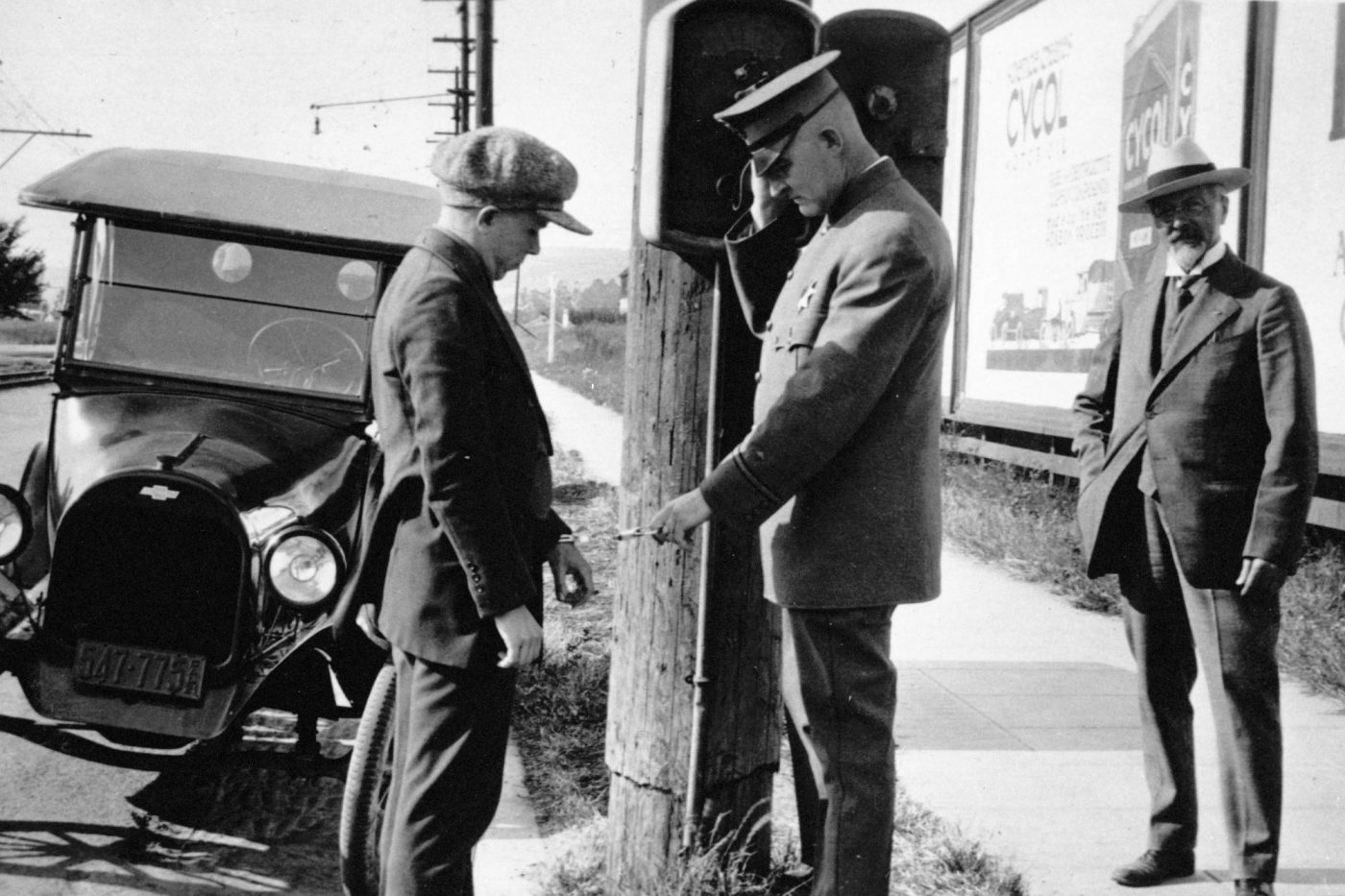
Ground was officially broken for construction a century ago on Aug. 11, 1925, for Berkeley’s planned new Chamber of Commerce building at the northwest corner of Center Street and Shattuck Avenue.
Images like this one published in the Aug. 7, 1925, Berkeley Daily Gazette, sought to lure locals to move to bucolic Orinda, beyond the hills yet still convenient to the inner East Bay. (photo courtesy of the Berkeley Historical Society and Museum)
Today we know the structure as the Wells Fargo Building. When it was finished it was, by far, the tallest structure in Berkeley aside from the Campanile. Rising 13 stories, it was Berkeley’s first commercial high-rise. On Aug. 4, 1925, the Berkeley Daily Gazette described the project as part of “downtown’s gigantic progress.”
At the same time, the city was petitioning the state Railroad Commission for permission to extend Addison Street across the triangular parcel of land between the two sides of Shattuck Avenue north of Center Street.
That two-block-long area contained Berkeley’s downtown Southern Pacific railroad station, the city wanted Addison Street to connect through the middle, and the commission’s approval was required when railroad facilities were affected. Downtown business owners supported the move, in part because they thought Addison would become the approach to a proposed grand entrance to the UC Berkeley campus at Addison and Oxford streets.
Southern Pacific was also planning to sell the northern section of the parcel north of Addison to University Avenue to a local real estate agent, Roy O. Long, who would erect commercial buildings there.
Orinda: Berkeleyans were being enticed by real estate ads in 1925 to move to the newly developing community of Orinda, just the other side of the Berkeley hills.
Ads promoted the “not-excessive” cost of buying land there, the August 1925 opening of a new country club and sports like swimming, tennis and horseback riding and the location “close to town … and yet not too close … a complete change of climate, an entirely different type of country, a totally different atmosphere.”
Stop signs: The humble stop sign was coming to Berkeley en masse in 1925. That year’s Aug. 4 Gazette reported that the City Council had adopted specifications for “500 ‘boulevard stop’ signs which will be installed throughout Berkeley under the direction of the California State Automobile Association, which will furnish the signs at cost. The Police Department has mapped out where these are to be placed.”
A ‘boulevard stop’ was what we call a stop sign today. They seem to have been intended to pause traffic on cross streets where they reached major streets, aka boulevards. Although absolutely commonplace today, they were controversial in their early years because, perhaps having grown up with horse-drawn carriages and wagons that moved at a steady pace, a lot of automobile drivers could not see the rationale behind being required to come to a full stop at an intersection even when no cross traffic was obstructing the way.
Street permits: In part because of the large amount of construction going on in Berkeley, City Manager John Edy told the Police and Building departments to require contractors to get permits if their construction activities temporarily obstructed the public street.
Track reunion: “Members of the famous University of California track team of 1895 which defeated five institutions in a series of eight appearances on a long Eastern tour are planning a reunion on the Berkeley campus,” the Gazette reported Aug. 5, 1925.
That expedition, which began in May 1895, marked the first time a UC athletic team had made a major trip to compete with Midwestern and East Coast universities. Cal won the meets, which put Berkeley on the map as a national competitor. The team also took along two blue flags with golden bears embroidered on them, helping to establish the golden bear as the University of California’s permanent mascot.
Bay Area native and Berkeley community historian Steven Finacom holds this column’s copyright.